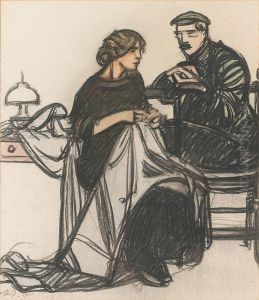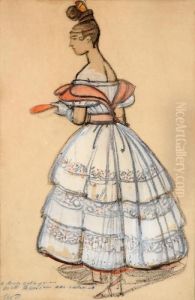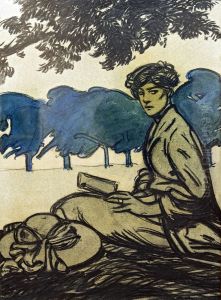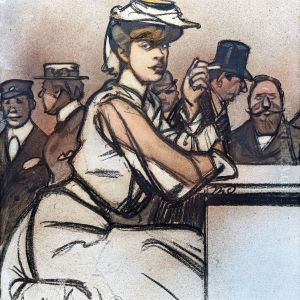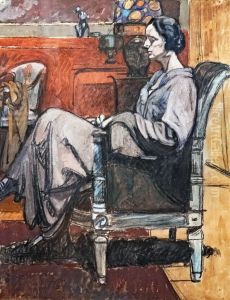Maxime Dethomas Paintings
Maxime Dethomas was a French painter and illustrator, whose work encapsulates the Belle Époque's fascination with the Parisian nightlife, theatre, and the demimonde. Born in Garges-lès-Gonesse, France, on October 13, 1867, Dethomas was deeply influenced by the burgeoning artistic movements of his time, particularly Symbolism and Post-Impressionism. He was a contemporary and friend of Henri de Toulouse-Lautrec, whose influence is evident in Dethomas's choice of subjects and stylistic tendencies.
Dethomas's career was marked by a profound engagement with the theatrical and cultural life of Paris. He became the artistic director of the Théâtre de l'Opéra and the Théâtre des Arts, where he designed sets and costumes, integrating his artistic vision into the heart of Parisian cultural production. His illustrations and posters, characterized by their vibrant colors and dynamic compositions, captured the spirit of Parisian nightlife, echoing the works of other Belle Époque artists by immortalizing the era's iconic figures and locales.
Beyond his work in theatre, Dethomas exhibited his paintings and drawings in several prominent venues, including the Salon des Artistes Français and the Salon d'Automne, where he was well-received by critics and the public alike. His artistic oeuvre includes not only scenes of Parisian life but also landscapes and portraits, showcasing a versatility and sensitivity to color and form.
Dethomas's work received official recognition in his time; he was awarded the Legion of Honour, France's highest order of merit, for his contributions to art and culture. Despite his success, Dethomas remained a somewhat peripheral figure in the history of art, overshadowed by contemporaries like Toulouse-Lautrec and Edgar Degas. However, his contributions to the visual culture of the Belle Époque continue to be appreciated for their evocative portrayal of an era defined by its artistic innovation and exuberance.
Maxime Dethomas passed away on January 21, 1929, in Paris. His legacy is preserved in the collections of several museums and galleries around the world, where his works continue to captivate audiences with their lively depiction of early 20th-century Parisian life.









